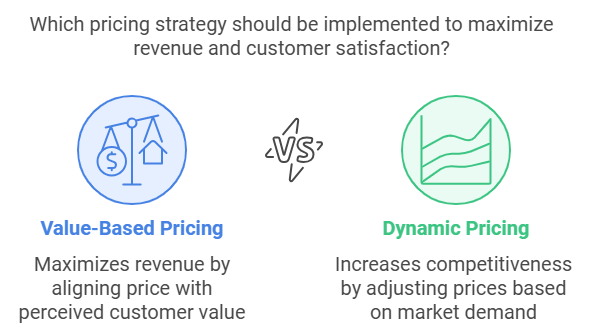
Enhancing Customer Retention and Loyalty
Enhancing customer retention and loyalty is an effective strategy for increasing business revenue. Loyal customers are more likely to make repeat purchases, which boosts long-term profitability. Loyalty programs are one way to encourage repeat business by rewarding customers for choosing your brand consistently. Offering points, discounts, or exclusive deals can create a positive experience, making customers feel valued and appreciated.
Personalized communication also plays a vital role in customer retention. By tailoring emails or messages to individual preferences, you show customers that you understand their needs. Personalization can include product recommendations based on past purchases, birthday discounts, or tailored content that resonates with their interests. These personal touches create stronger connections, making customers more likely to return.
Regularly seeking customer feedback can also improve loyalty. Listening to customers and responding to their concerns shows that you care about their experience. Addressing issues quickly builds trust and strengthens relationships. By focusing on customer retention through loyalty programs and personalized communication, you lay a foundation for consistent sales, contributing to increasing business revenue over time.
Upselling and Cross-Selling Techniques
Cross-selling and upselling techniques are valuable tools for increasing business revenue by maximizing the value of each customer transaction. Upselling involves encouraging customers to choose a higher-end product or service than originally intended. To do this effectively, focus on the added benefits of the upgrade rather than just the cost. Highlight features that add value or convenience, helping customers see why the enhanced option is worth considering.
Cross-selling, on the other hand, involves introducing customers to complementary products that enhance their initial purchase. For example, if a customer buys a smartphone, suggesting a protective case or screen protector is an effective cross-sell. To succeed with cross-selling, make sure the recommended products are genuinely useful and align with the customer’s needs. Thoughtful recommendations help customers feel that you understand their goals, making them more likely to accept additional offers.
Timing is crucial for both upselling and cross-selling. Presenting additional options at the right moment—whether during checkout or after a purchase—can improve success. Personalizing these offers based on the customer’s purchase history or browsing habits can also make the approach feel tailored and relevant. By using these techniques thoughtfully, you not only boost sales but also enhance the customer experience, creating value for both your business and your clients.
Expanding Product or Service Lines
Expanding product or service lines offers a valuable path for increasing business revenue by opening up new opportunities to meet customer needs. Adding complementary products or related services allows you to serve your existing audience in more ways. This approach builds customer loyalty, as clients often appreciate the convenience of finding multiple solutions from a single provider.
When considering expansion, focus on products or services that naturally align with your current offerings. For example, if you run a fitness brand, adding nutrition coaching or workout accessories might resonate with your audience. By aligning new offerings with what your customers already value, you make the expansion feel like a logical, seamless addition.
Market research is key before launching new products or services. Gathering customer feedback helps you understand demand and pinpoint which areas hold the most potential. You can also test new ideas with limited product launches or trial services to gauge interest. Expanding thoughtfully not only boosts sales but also strengthens your brand’s reputation as a comprehensive resource. This strategy helps you reach new revenue streams while enhancing the value you bring to your customers.
Improving Pricing Strategies
Improving pricing strategies is a key component in increasing business revenue while maintaining customer satisfaction. Value-based pricing focuses on setting prices based on the perceived value to the customer, rather than production costs. This approach considers how much customers are willing to pay based on the benefits they receive. For instance, if your product solves a critical problem or offers unique advantages, you can price it higher. Customers often pay more when they see clear value, making this strategy effective in maximizing revenue.
Dynamic pricing, on the other hand, allows prices to adjust based on demand, competition, or even customer behavior. Many online retailers use this strategy to stay competitive, as prices fluctuate to match current market trends. By monitoring customer demand and competitor pricing, you can adjust your prices in real-time to capture more sales. Dynamic pricing is particularly useful in industries with changing demand, such as travel or e-commerce, as it helps balance supply and demand.
Regularly reviewing your pricing strategies helps you find the optimal price point that appeals to customers while maximizing profits. Experimenting with these methods, or even combining them, allows you to adapt to market conditions and customer expectations. By implementing thoughtful pricing strategies, you ensure your business remains competitive, further contributing to increasing business revenue.
Leveraging Digital Marketing for Sales Growth
Leveraging digital marketing channels is essential for increasing business revenue, as these channels connect you with a wide audience. Social media, for example, helps you reach new leads by sharing valuable content, engaging directly with followers, and showcasing your products. Through targeted ads on platforms like Facebook or Instagram, you can reach potential customers based on their interests, increasing your chances of conversion.
Email marketing is another effective digital tool. It allows you to communicate directly with interested prospects and keep existing customers engaged. With personalized emails, you can send product updates, special offers, or helpful information tailored to customer needs. Email campaigns often generate high returns, especially when you segment your audience to target different groups with relevant content. Consistently offering value through email encourages repeat business and builds customer loyalty.
Paid advertising, such as Google Ads, also supports sales growth by driving traffic to your site. With pay-per-click ads, you attract customers searching for products like yours, connecting with leads who are ready to buy. Paid ads can increase visibility quickly, helping you stay competitive in your market. By combining social media, email marketing, and paid ads, you create a cohesive digital strategy that drives new leads and enhances sales, ultimately contributing to increasing business revenue.
Exploring New Market Segments
Exploring new market segments is a powerful way of increasing business revenue by reaching audiences beyond your current customer base. Start by analyzing your product or service to identify who else might benefit from it. Look at customer data to find trends or shared characteristics that might apply to untapped groups. For example, if you currently serve young professionals, consider expanding to small businesses that may have similar needs.
Geographical expansion is another effective approach. Moving into new regions, whether local or international, opens up opportunities to serve customers with fewer competitive options. Conduct market research to understand the cultural preferences and buying behaviors in new areas. Adapting your messaging or product features to meet local needs can increase your appeal in these markets, making it easier to gain a foothold.
Testing your entry into a new market with a limited launch can reduce risk. By initially offering your product to a smaller segment, you can gauge interest and make adjustments. Gathering feedback from this test group helps refine your approach before committing more resources. Expanding into new segments or regions allows you to reach additional revenue streams, effectively increasing business revenue while growing your brand’s influence.
Conclusion
Increasing business revenue requires a combination of strategies that focus on both existing and new opportunities. By improving customer retention, refining pricing, and exploring new markets, you can build a sustainable approach to growth. Leveraging digital marketing, expanding product lines, and using upselling techniques further support these efforts. Each method adds value for your customers, keeping them engaged and encouraging repeat business. With these strategies in place, you create a solid path for increasing revenue and ensuring long-term success for your business.


